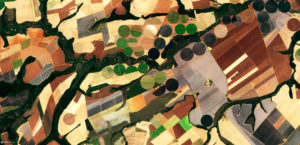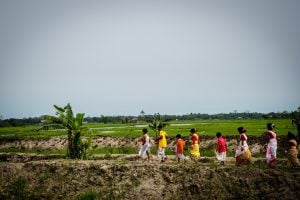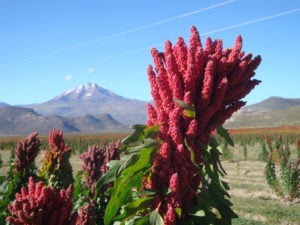With high rates of tropical forest loss in last year, NGOs, governments and businesses must come together to better monitor illegal deforestation and tackle causes such as agriculture, according to a new report by the World Resources Institute (WRI).
WRI’s Global Forest Loss Data 2018 shows the alarming loss of 12 million hectares of primary tree cover globally – an area the size of Belgium. The figure is down from the previous two years when wildfires caused unusually high forest loss. Three of the top five countries with the highest rate of forest loss are in South America (Brazil, Colombia and Bolivia). Indonesia and the Democratic Republic of Congo also feature on the list.
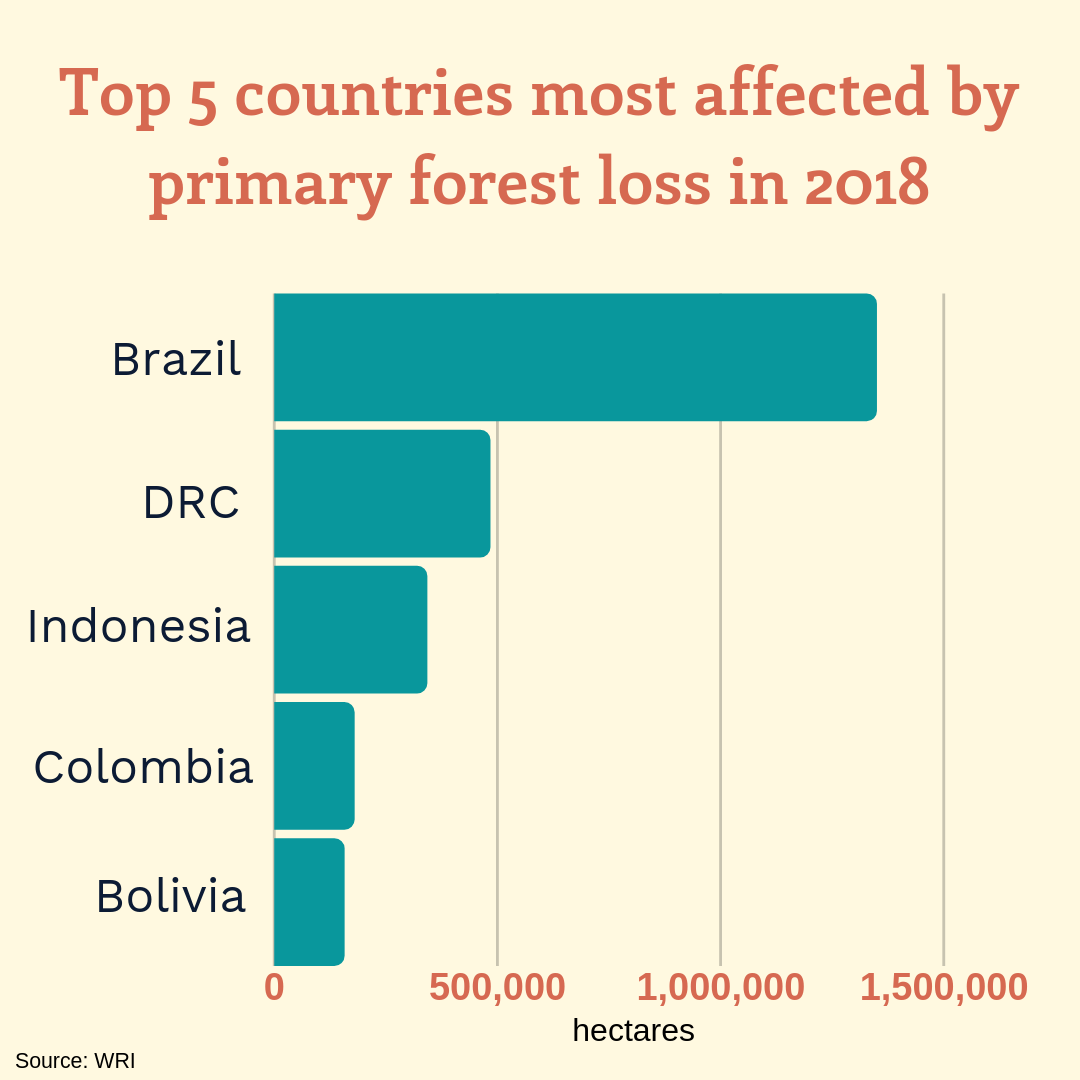
“Tropical forests are home to the planet’s biological diversity and the impact on the ground is heart-breaking,” said WRI’s Frances Seymour.
Brazil recorded an “improvement” in the rate of forest loss, the report said, although this was largely due to the 2016 and 2017 wildfires that spiked figures and decimated the South American country’s ecosystems.
WRI reported an increase in illegal clearing in Brazil, especially in indigenous territories.
In the first half of 2018, 4,000 hectares disappeared around the Ituna Itata reserve in the northern Brazilian state of Pará, which is thought to be home to some of the world’s last remaining uncontacted people.
Indigenous people depend on the forest for food, medicine and shelter and research shows that they significantly contribute to the maintenance of healthy forest ecosystems.
Soy effect
Wildfire years notwithstanding, Brazil’s forest loss is on the rise again, a trend that can be explained by the growing demand for soy from foreign countries, especially China.
For every area of forest loss, there’s likely a species that is one step closer to extinction
Since the US-China trade war kicked-off in early 2018, China increasingly turned to Brazil for soy imports. November 2018 data showed an 80% increase over 12 months.
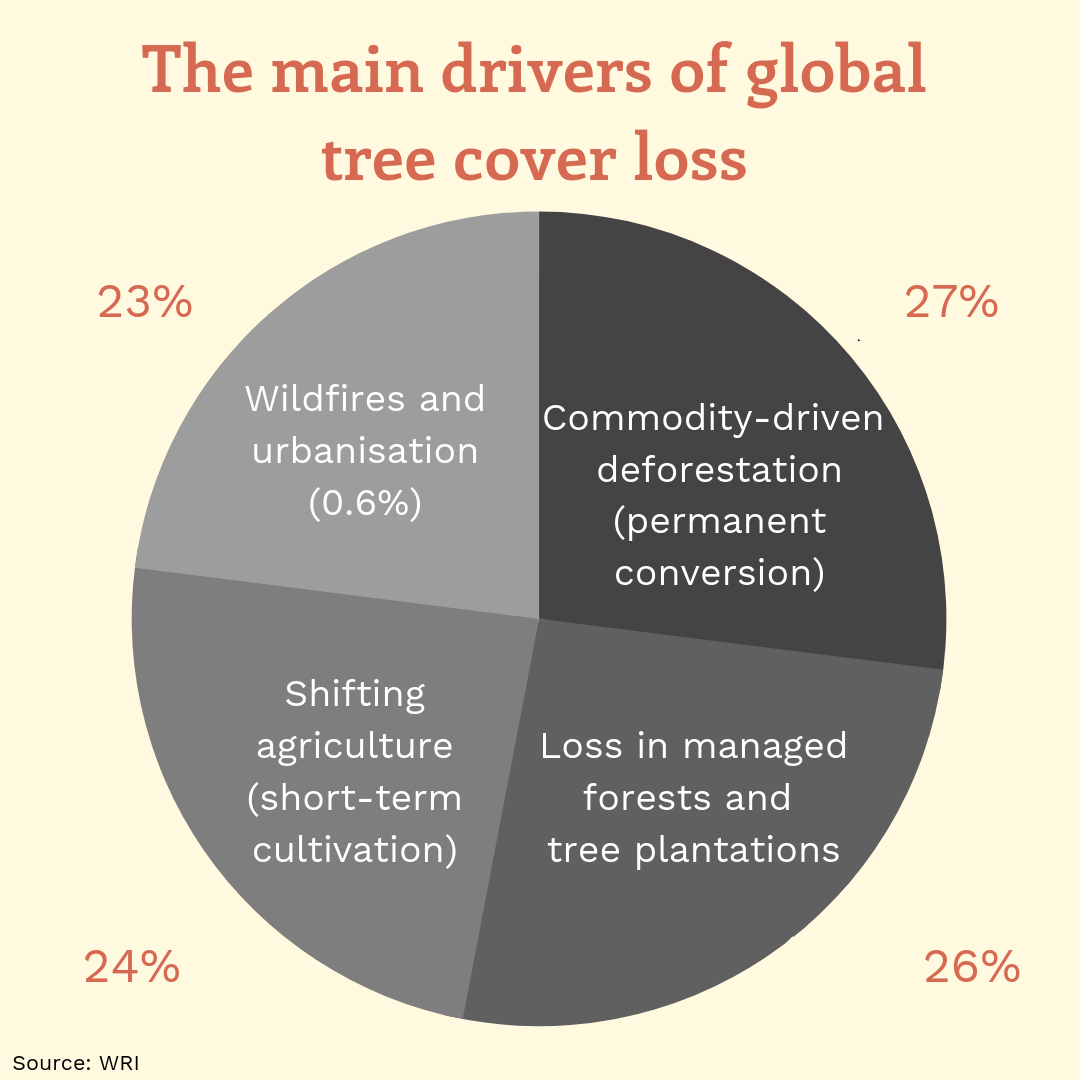
Soy cultivation is the world’s second leading driver of tropical deforestation in South America, according to WRI. The conversion of forests to plantations in order to meet rising global demand causes soil erosion as the crop is not native to tropical forests.
Once tropical forests are cut down, they may never return to their original state.
Seymour said:
“For every area of forest loss, there’s likely a species that is one step closer to extinction; a family that has lost access to an important area of their income from hunting, gathering and fishing; and a community downstream that has less access to clean water and is more exposed to flood and landslides.”
Improvements in Indonesia
Contrary to Brazil, Indonesia, which is home to the third-largest tropical forest in the world, recorded notable improvements in forest protection in 2018. The country reduced the rate of primary forest loss by 40%.
Belinda Arunarwati Margono, director of Forest Resources Inventory and Monitoring at the Indonesian Ministry of Environment and Forestry said her government is committed to protecting forests and attributed improvements to law enforcement, national awareness campaigns and the implementation of policies such as the 2016 peat protection plan.
Peatlands are also important in storing carbon and other sources of global warming.
Caroline Winchester, a research analyst at WRI’s forest monitoring platform Global Forest Watch, said Ghana and the Ivory Coast have employed effective forest monitoring systems. Winchester identified illegal mining and small cocoa farm expansion as the leading causes of tropical forest loss in those countries. They lost 60% and 26% of their forests in 2018, respectively.
“We really need to implement an effective monitoring system at country scale so governments can connect monitoring across the whole cocoa belt as well as the cocoa supply chain to empower companies,” Winchester said.
Successful initiatives
The joint efforts of governments, NGOs and companies have proven effective in tackling deforestation linked to the production of agricultural commodities.
For instance, the Soy Moratorium – a voluntary commitment by several multinationals to avoid buying soybeans cultivated on deforested parts of the Brazilian Amazon after 2006 – led to a drop in deforestation rates.

The initiative emerged from a collaboration between NGOs including Greenpeace and businesses such as fast-food giant McDonalds and soy trader Cargill.
However, with global soy demand still high – especially from China – cultivation spread in the Cerrado savannah. Though Chinese buyers source soy from only a few Brazilian municipalities where deforestation is rife, the sheer volume of purchases – some 84 million tonnes last year – means it can have a big impact.
Chinese imports of Brazilian beef are also associated with a heightened risk of deforestation.
At the Soft Commodities Forum (SCF) in February, Johnny Chi, chairman of China’s largest soy importer Cofco International, declared his support for a similar market-based initiative in the Cerrado biome.
Seymour welcomed his statement and said she is optimistic about the future of forest protection.
“Indonesia and Brazil have proven that it is possible to reduce deforestation and the international community is willing to pay up when that success is achieved [as agreed in the Paris Agreement],” she said.
“That produces a virtuous circle where we can be collectively successful, as an international community in driving down one of the biggest cause of climate change.”

